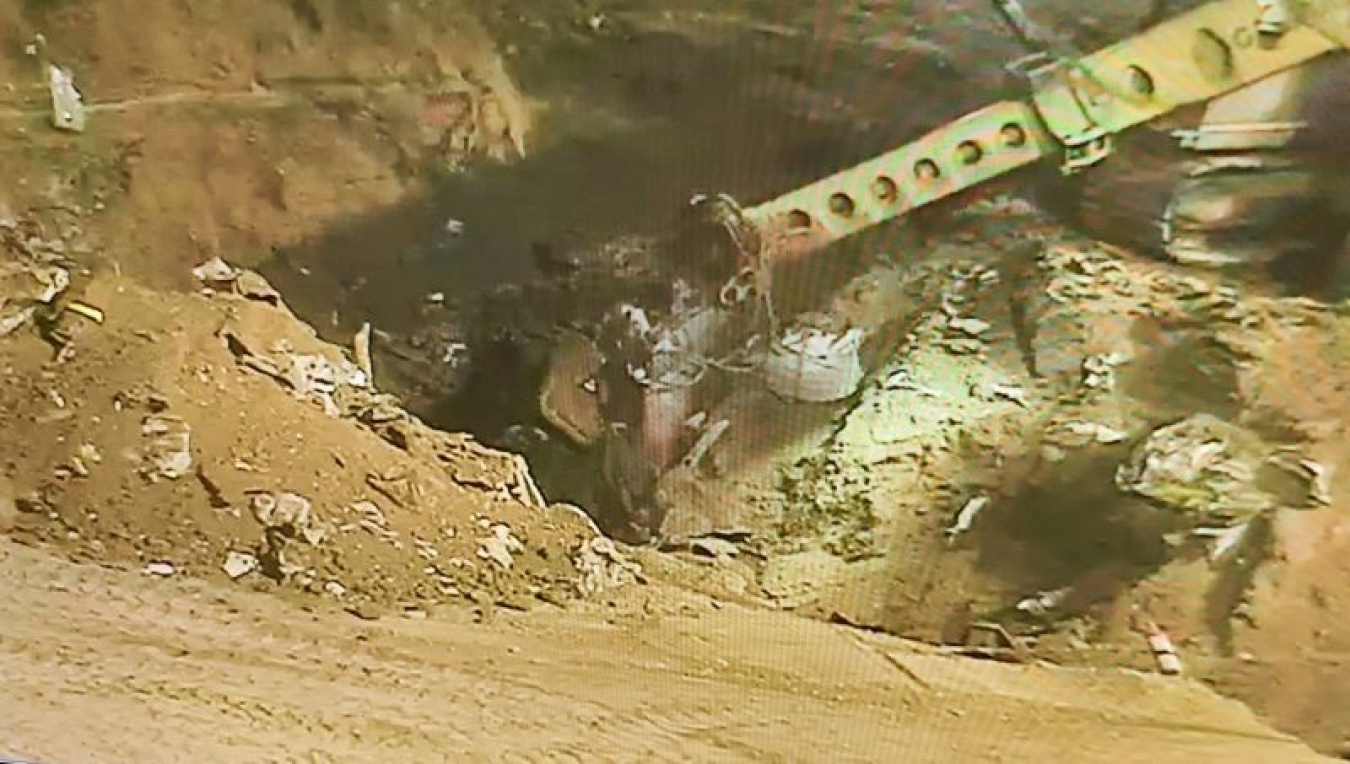DOE crews at the Idaho National Laboratory (INL) Site recently made significant progress toward completing a high-priority cleanup project that helps protect the Snake River Plain Aquifer and maintains a commitment with the state of Idaho.
Office of Environmental Management
December 29, 2021
An extended-arm excavator retrieves the final waste from the Accelerated Retrieval Project IX facility on Dec. 6, 2021. The final waste retrieval is pictured on a computer monitor inside a control room at the Idaho National Laboratory Site as access to the retrieval area is controlled for safety.
IDAHO FALLS, Idaho – Department of Energy crews at the Idaho National Laboratory (INL) Site recently made significant progress toward completing a high-priority cleanup project that helps protect the Snake River Plain Aquifer and maintains a commitment with the state of Idaho.
In an achievement more than 18 months ahead of schedule, an operator in an extended-arm excavator retrieved the final amount of targeted buried waste at the Accelerated Retrieval Project (ARP) IX facility at the Radioactive Waste Management Complex earlier this month.
Crews will continue to repackage waste from ARP IX for the next several weeks. The repackaged waste will then be shipped out of state to a permanent repository.
“The buried waste was the primary concern of our stakeholders since the beginning of the cleanup program,” said Connie Flohr, manager of the Idaho Cleanup Project for the DOE Office of Environmental Management (EM). “Completing exhumation early will allow us to get an earlier start on construction of the final cover.”
The buried waste retrievals took place within the Subsurface Disposal Area (SDA), a 97-acre landfill. Eventually, crews will take down the remaining soft-sided buildings at the SDA and construct an earthen cover over the entire area.
The excavation marked the completion of targeted waste exhumation in the final 0.69-acre portion of the SDA. The remediation is a requirement under a 2008 agreement with the state of Idaho and subsequent Record of Decision (ROD) between DOE, the state of Idaho, and U.S. Environmental Protection Agency.
DOE and its contractor are required to remove, repackage and ship out of state plutonium filters, graphite molds, sludges and roasted uranium fines from the SDA, which received radioactive and hazardous wastes for shallow burial from 1952 to 1970.
DOE is working with the Idaho Department of Environmental Quality to provide information that could result in a regulatory declaration that all buried waste exhumation activities required by the 2008 agreement are complete.
“I want to thank everyone associated with waste retrieval portion of this project,” said Fred Hughes, program manager with EM INL Site cleanup contractor Fluor Idaho. “I’m so proud of the crews that took this on as personal goals to get this very important task completed this year.”
Flohr also expressed her appreciation for the workers who finished the exhumation project early.
“I can’t thank them enough,” she said. “The crews were so dedicated to the mission and they exceeded everyone’s expectations. It doesn’t get better than this.”
The ARP project officially began in early 2005. Crews were tasked with removing waste from portions of the SDA. Eight subsequent exhumations completed the 5.69-acre requirement outlined in the 2008 agreement and ROD. Crews removed more than 10,300 cubic meters of waste — or about 49,542 drums — from the SDA, surpassing the minimum 7,485 cubic meters of waste required to be exhumed.
To receive the latest news and updates about the Office of Environmental Management, submit your e-mail address.

